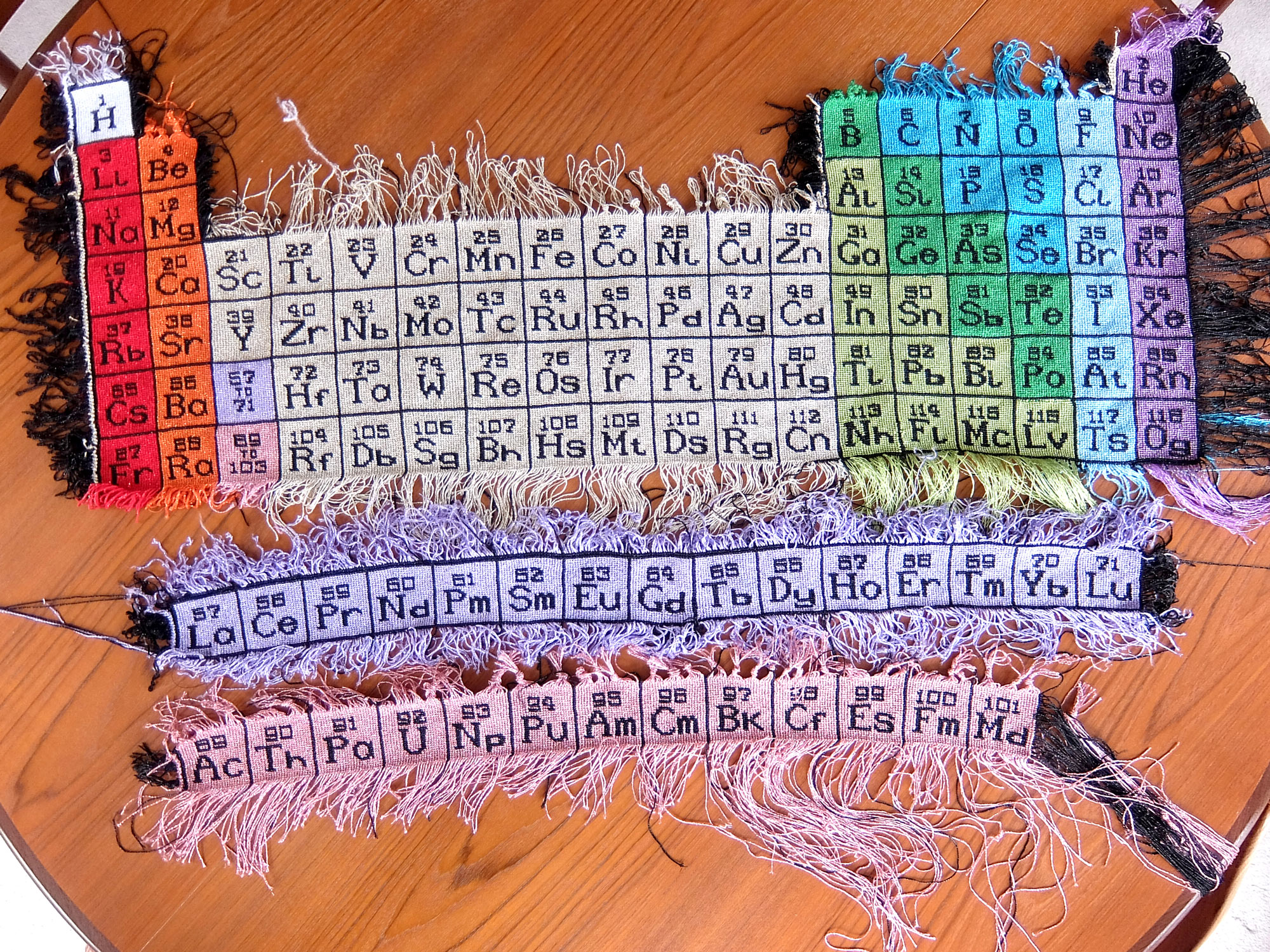Editor’s note: While we were preparing this article, Jane interviewed herself just for fun and we liked it, so here it is.
Since then, she has been invited to show her macramé periodic table at several 2019 events celebrating the 1869 publication of Dmitri Mendeleev’s periodic table of the elements, including the International Year of the Periodic Table opening ceremonies in Paris and exhibitions at the University of Edinburgh, St. Catharine’s College in Cambridge, and the Royal Society of Chemistry in London.
This week she finished the final elements (in the actinide aka actinoid series) and began stitching the complete work together for framing.
Why the periodic table?
My dad is a retired chemist (and hobbyist cider maker). After my last project, he suggested I do a knotted version of the periodic table. The table has its 150th anniversary this year so it’s very timely.
What materials are you using?
I’m using metallic crochet thread, which is about the same thickness as embroidery thread. I’m a big fan of rainbow colors so I have given a different color to each group in the periodic table in rainbow order.
How it is done?
About 200,000 half hitch knots. Two for every “pixel” of color. Knotting right to left with color threads and left to right in black to do the writing.
How long?
I timed myself: It takes 5 minutes for one row in a square, so in theory that is 2 hours per element square, working flat out. And there are 120 squares! What will you do with the project? Display it at craft fairs or art galleries. Plus I will take it with me in my STEM ambassador role promoting science in U.K. schools (stem.org.uk).
What’s next?
Macramé 3D shapes, as toys for my nephews.
How to Macramé the Periodic Table
The structural thread is black. The working thread is white in the first square (Hydrogen); you’ll use different colors for different elements.
Follow the pixel pattern on its side, knotting right to left for 30 rows in white. You’ll make two knots to create each pixel (below). You can download the other patterns here.
When black appears on the pixel pattern, knot the black thread left to right around the white thread so a black pixel will appear (below).
The black thread didn’t photograph well, so let’s take a better look at the two types of knots. In the photos below, the working thread (white) is knotting right to left; do it twice.
Next, the structural thread (pink) is knotting left to right to cover the main color; do it twice.
Finishing off a pink pixel, you see a single pink dot amongst the white (below).
Repeat 200,000 times.
To get started with macramé, check out our Macrame 101 tutorial.


















